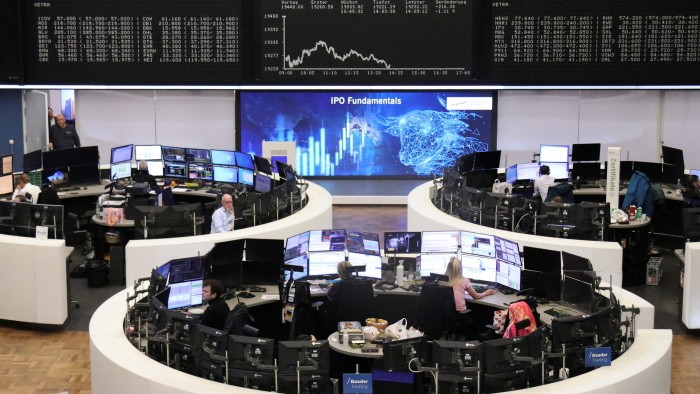Unlock the White House Watch newsletter for free
Your guide to what the 2024 US election means for Washington and the world
European stocks tumbled and currencies slid against the dollar on Tuesday as investors fretted over the impact of a more hawkish approach to China under a second Trump presidency.
The benchmark Stoxx Europe 600 index lost 2 per cent, its worst one-day performance since the market rout in early August. Paris’s Cac 40 finished down 2.7 per cent, while Frankfurt’s Dax shed 2.1 per cent.
The US dollar extended its gains following last week’s presidential election, with the dollar index up 0.6 per cent against a basket of six peers.
Sterling shed 1.1 per cent to $1.273 and the yen to ¥154.90, their lowest levels since early August. The euro dropped 0.5 per cent to $1.06, its weakest level in a year.
The moves followed reports that US senator Marco Rubio, an Iran and China hawk who serves on the Senate foreign relations committee, would become secretary of state in Trump’s administration.
Traders were also pricing in the increasing prospect that the Republicans will control both houses of Congress, giving Trump more leeway to push through tax cuts and aggressive trade tariffs.
“The rest of the world is being squeezed. Europe is being squeezed here. China is also going to be hurt quite a bit as it has been singled out as the main tariff target,” said Tomasz Wieladek, chief European economist with T Rowe Price. “It is almost like a redistribution of the rest of the world’s growth into the US economy,” he added.
Copper, viewed as an indicator of global economic health, fell nearly 2 per cent in London as traders feared commodities would bear the brunt of possible US tariffs. Palladium, used in car catalytic converters, dropped 4.1 per cent.
Kelly Ke-Shu Chen, an analyst with DNB Markets, said Rubio’s stance would undercut prospects of “any form of dialogue” between the US and China.
US Treasury yields rose as traders raised bets that US interest rates may not fall as much as previously thought, with strong economic data and potential tax cuts by the Trump administration seen as stoking inflation.
The yield on the rate sensitive two-year bond was up 0.1 percentage points to 4.35 per cent while the yield on the benchmark 10-year added 0.12 percentage points to 4.43 per cent.
In recent weeks investors have pared back their expectations of US rate cuts by one percentage point, to just three quarter point cuts by the end of next year, according to data from LSEG.
Laura Cooper, head of macro credit at asset manager Nuveen, said the market was pricing in the risk of reflation. “There is limited upside in yields as we’re going to lack a political policy catalyst [for some time],” she said.
The leap in Treasury yields came ahead of Wednesday’s US inflation data, with economists polled by Reuters expecting consumer prices to have risen to 2.6 per cent in October, up from 2.4 per cent the previous month.
In US equity markets, the benchmark S&P 500 was down 0.2 per cent and the Nasdaq Composite shed 0.1 per cent to pare back from the past week’s Trump-led rally.
Read the full article here




